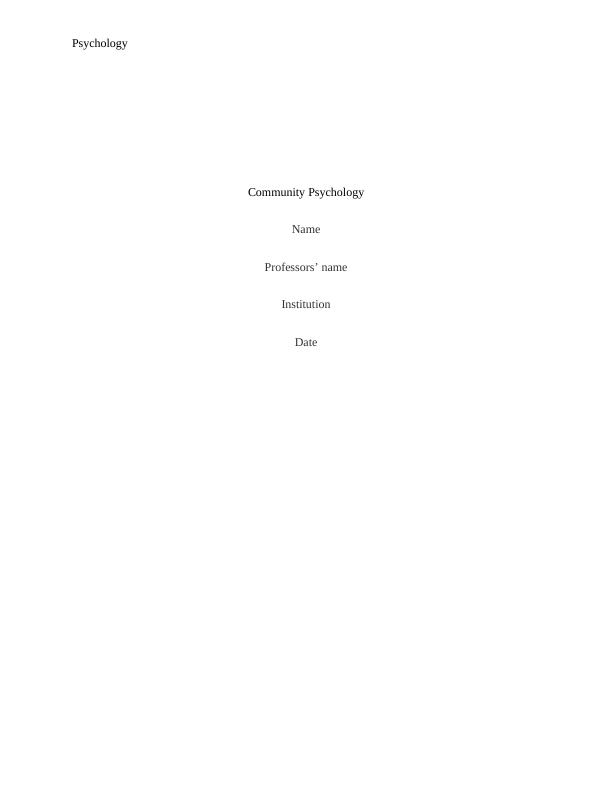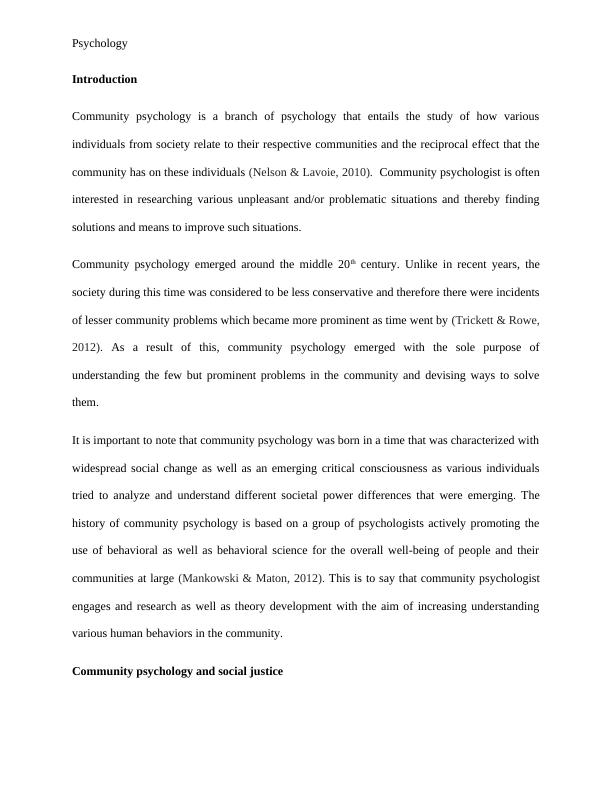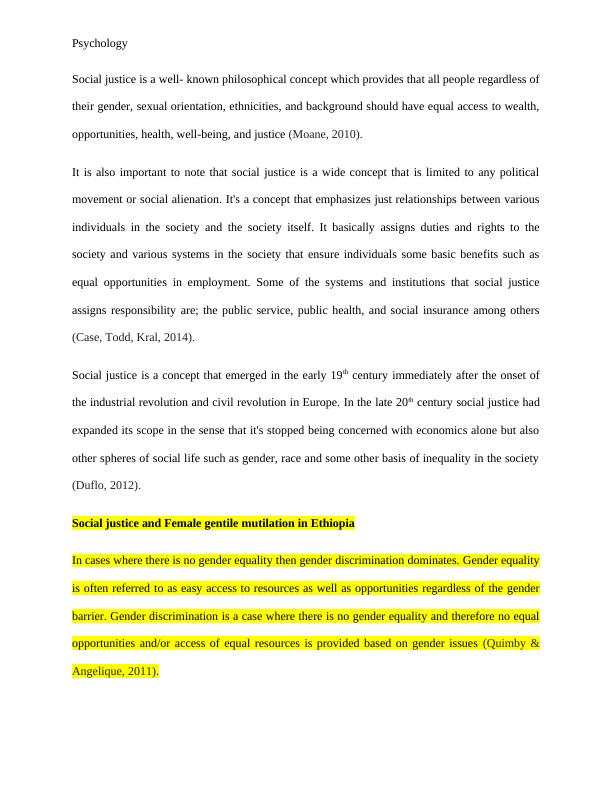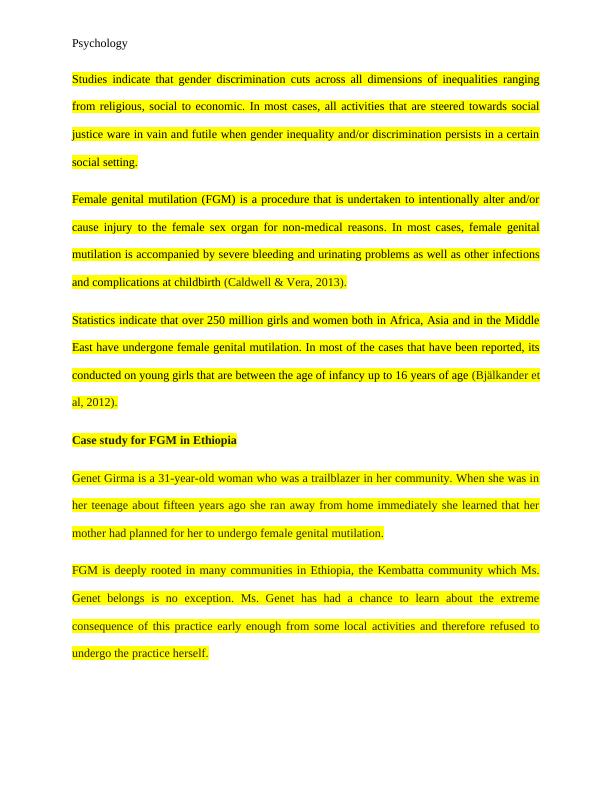Community Psychology and Gender Discrimination
An essay plan on the topic of community psychology, focusing on the emergence of community psychology, its historical roots, and its relationship with social justice, particularly in the context of gender discrimination. The plan includes a theoretical argument, examples, research and statistics on the impact of community psychology, and a discussion on professional and ethical issues. The conclusion reflects on the learning and insights gained.
Added on 2023-01-18
About This Document
Community Psychology and Gender Discrimination
An essay plan on the topic of community psychology, focusing on the emergence of community psychology, its historical roots, and its relationship with social justice, particularly in the context of gender discrimination. The plan includes a theoretical argument, examples, research and statistics on the impact of community psychology, and a discussion on professional and ethical issues. The conclusion reflects on the learning and insights gained.
Added on 2023-01-18
End of preview
Want to access all the pages? Upload your documents or become a member.




